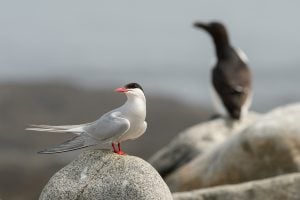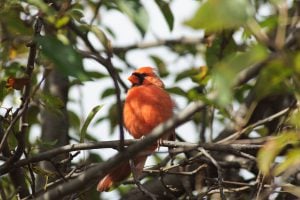One of the strongest El Niño climate oscillations in recorded history has been bringing weird weather to Canadians from coast to coast this winter, and that means some other surprises could be in store for participants in this year’s Great Backyard Bird Count.
Jon McCracken, Director of National Projects for Bird Studies Canada, which organizes the annual Canadian count, says El Niño years generally see greater numbers of avian “vagrants” — bird species that show up outside their normal geographic range or migratory season.
“Birds are like people; they’re highly influenced by local and regional weather conditions,” McCracken says.
Warmer temperatures can advance the spring migration schedule by several weeks, while snow cover (or lack thereof) has a big impact on food availability. The birds will do what they must in order to survive, which means birders shouldn’t be surprised if they spot an unusual visitor at their backyard feeder.
Already, reports of “vagrant” birds have been popping up across the country. The redwing and Siberian accentor, both native to Eurasia, have been spotted in British Columbia, while species that should still be wintering down south, such as the Bullock’s oriole, vermilion flycatcher and black-throated gray warbler have been showing up in the eastern provinces.
A generally mild pattern across the country should mean both birds and observers will be out in greater numbers than in previous years, and McCracken is hopeful that this year’s Great Backyard Bird Count will be record-breaking in more ways than one.
“I can’t predict exactly what species we’re going to see on this count, but I can almost guarantee we’re going to have some surprises,” he says.
The downside of El Niño
Of course, El Niño isn’t necessarily beneficial for all birds. On the Pacific coast of North America, warmer than normal ocean surface temperatures have disrupted the food supply for seabirds like the common murre, causing mass die-offs. Scientists have noted with concern that the intensity of this year’s El Niño is having reverberations throughout the food chain.
About the Great Backyard Bird Count
That’s precisely why citizen science projects like the Great Backyard Bird Count are so important, McCracken says.
“The data is used to help track and monitor populations of birds and their distribution at this time of year; this helps fill in the gaps in our understanding of things like El Niño events,” he explains.
“It gives a very good snapshot of the state of bird life globally as the years unfold.”
Participation in the count has grown exponentially since it was started in 1998. Last year, 140,000 people in 100 countries took part and recorded 241 different bird species.
You don’t have to be a bird expert to join in; all you need is an Internet connection and a basic knowledge of bird species native to your area – or an interest in learning how to identify them.
This year’s count will take place February 12-15. For more information on how to participate, visit the GBBC website.





